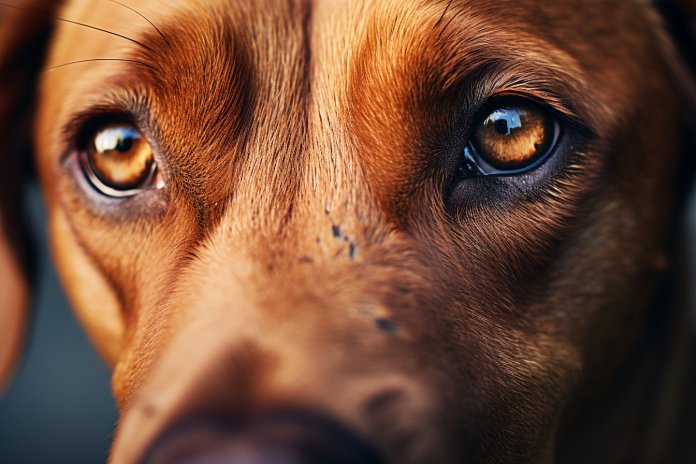
It is commonly believed that humans can see their noses all the time, but our brains actually “erase” them from our field of view. Our noses are constantly in our line of sight, so our brains have adapted to ignore them.
But what about dogs? Do they experience the same thing? Well, dogs have a wider field of view than humans, so let’s explore whether they can see their noses.
Signs That Dogs Can See Their Noses
While dogs can see their noses, there is no evidence to suggest that it bothers them. They only react when something changes, such as an object on their nose or if their nose becomes swollen due to an insect sting.
In such instances, dogs may exhibit signs of discomfort, including head tilting, chewing, scratching, and whining. Other signs to watch for are pacing, panting, and barking.
Body Language
If your dog sees their nose, they may exhibit behaviors such as barking, head tilting, whining, scratching, and pacing. They may also paw at their nose or rub it on the ground.
History of Dogs Seeing Their Noses
Dogs have evolved to have excellent eyesight in low light conditions. Their eyes are specialized for wide angles and movement detection, allowing them to spot prey and coordinate with other pack members during hunts. This wide field of vision also helps them stay safe from natural enemies.
Science Behind Dogs Seeing Their Noses
Dogs have a complex sense of sight, surpassing humans in some aspects. They are particularly adept at detecting motion. While their field of vision is about 270°, it varies depending on the breed. Dogs with longer noses have a wider field of vision. Humans, in comparison, have a field of vision of only 180°.
Although dogs can see their noses, their brains block it out, just like ours do. This is because the nose is always present in their field of vision.
Training Your Dog Tricks with Their Nose
While dogs may not react to seeing their own nose, they can be trained to respond to objects placed on their noses. Positive reinforcement should be used when training, as negative methods can harm your dog’s well-being. With time and persistence, you can teach your dog tricks and even create your own video showcasing their skills.
“Dogs can see their noses, but their brains block it out just like humans do.”

Tips & Things to Know
1️⃣ Dogs can see their noses, but they are not bothered by it unless there is something on their nose or it is causing discomfort. Look for signs such as head tilting, chewing, scratching, whining, pacing, panting, and barking if your dog is bothered by something on their nose.
2️⃣ Dogs have a wider field of view than humans, and their eyes are specialized for low-light conditions and movement detection. This is because their ancestors were hunters and scavengers, and they needed good coordination and awareness of their pack members. Their field of vision ranges from 220° to 290° depending on the breed, while humans only have 180°.
3️⃣ You can train your dog to do tricks using their nose, such as balancing treats on their nose and waiting for your signal to eat them. Start by training your dog to wait with eating their food until you give the signal, using positive reinforcement. Be patient and persistent in your training.
Frequently Asked Questions, Answered ✅
1. Can humans see their own noses all the time?
– No, our brains have adapted to “erase” our noses from our field of view.
2. Can dogs see their own noses?
– Yes, dogs can see their noses, but they are not bothered by it like humans are.
3. What are some signs that indicate a dog is bothered by their nose?
– Signs include head tilting, chewing, scratching, whining, pacing, panting, and barking.
4. Why do dogs have a wider field of view than humans?
– Dogs have a wider field of view because their ancestors needed good coordination while hunting in packs and to spot prey in lower light conditions.
5. How can you train a dog to do tricks involving their nose?
– You can train a dog to do tricks involving their nose by using positive reinforcement and starting with simple tasks like waiting for food before eating.